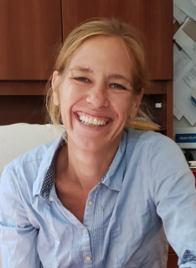Dr. Kate Hubbard leads the harmful algal bloom (HAB) monitoring and research program for the Florida Fish and Wildlife Conservation Commission-Fish and Wildlife Research Institute (FWC-FWRI), and since 2020, has directed FWC’s Center for Red Tide Research. As a research scientist, she works closely with a broad network of international, federal, regional, state, county, academic, nonprofit, industry, and citizen partners as well as the IOOS Regional Associations to sustain and advance harmful algal bloom (HAB) monitoring. She also prioritizes engaging junior scientists in research and communication. Hubbard works with this broad network to examine biological responses to environmental perturbations across varying spatiotemporal scales. Recent enhancements to Florida’s HAB monitoring network under her direction have focused on new, enhanced, and/or sustained biological, chemical, and physical observation capabilities for Karenia brevis that can be more broadly applied to other regional HABs as well. Her specific expertise in genomics and ecology has helped evaluate drivers of HABs and other species using environmental DNA (eDNA), handheld detection technology, or submersible in situ detection tools such as the Imaging Flow CytoBot. As a Co-Investigator of the NSF/NIEHS-funded Woods Hole Center for Oceans and Human Health at the Woods Hole Oceanographic Institution, Hubbard is involved in HAB detection and forecasting projects across the U.S. to better understand and predict blooms and their impacts, and is committed to working at the interface of HAB research and management. She received her B.A. in Biology from New College of Florida and M.S. and Ph.D. degrees in Biological Oceanography from the University of Washington. She has served on the National HAB Committee since 2017.
















